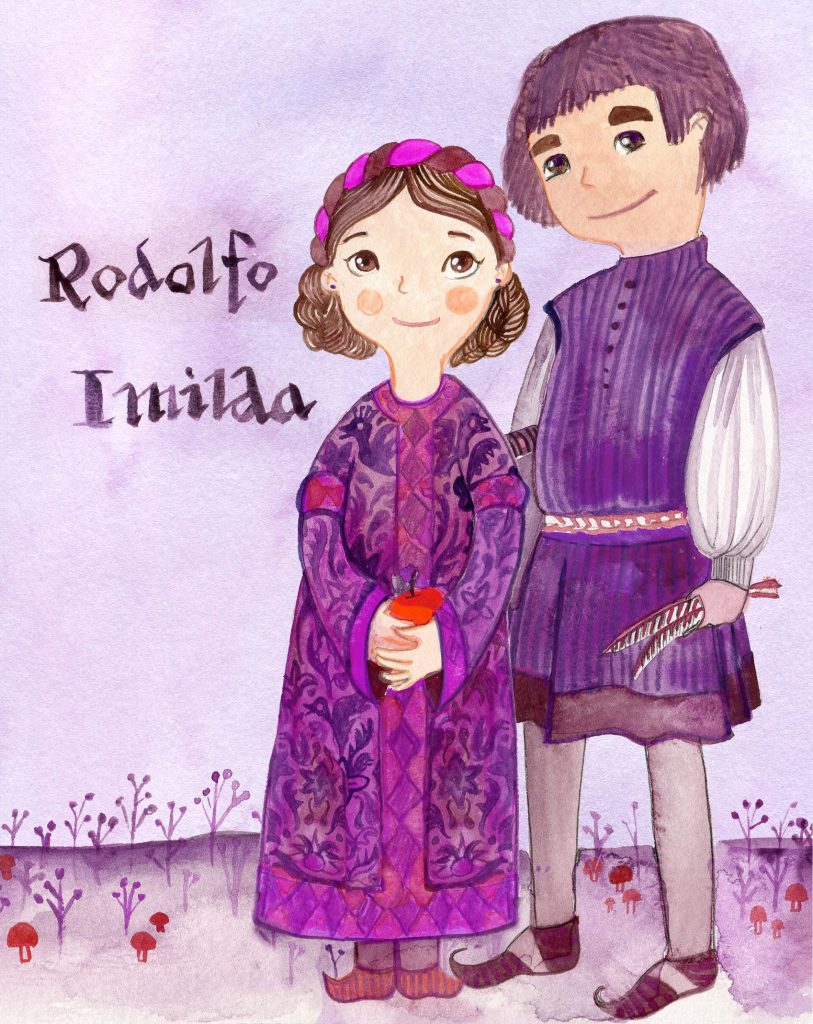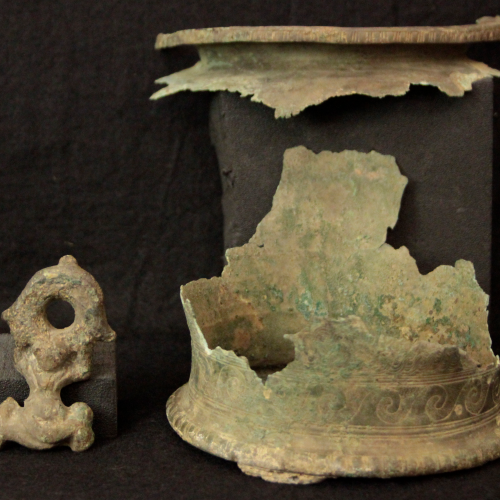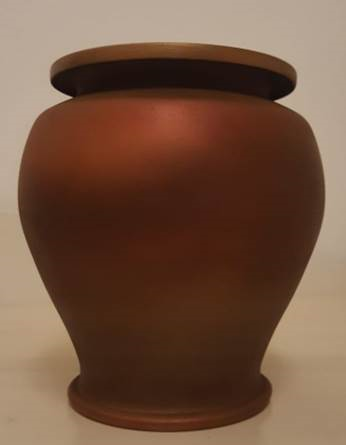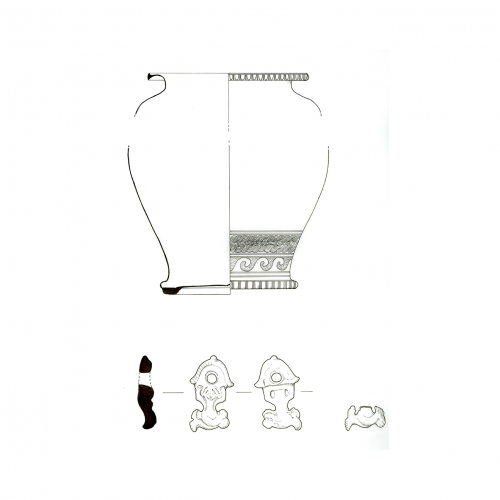
Etruscan Cetamura
Situla L with Skylla Handle Attachment
Period | Etruscan |
Year | 4th or Early 3rd c. BCE |
Material | Bronze and Lead |
Location | Well #1 |
Cet. Inventory | Inv. C-13-797 |
Bronze situla L is one of the finest Etruscan objects excavated from Well # 1. Though it is in very poor condition, it is evident from the skilled engravings and attached sculptures of a sea monster that it was a luxury object. The shape, reconstructed with 3-D printing, indicates it was originally a wine bucket.
Prov. 5N 18W.102A. Diam. of base: 12.5. Ext. diameter of rim: 14.5. Int. diam of rim: 11.5. Est. h. of whole vessel: ca. 20. Lead foot: 3 x 1.5 x 0.5. Wt. of base: 273 g. Wt. of preserved part of rim: 78 g. Wt. of complete Skylla-monster handle attachment: 91 g. Wt. of fragment of Skylla-monster handle attachment 20 g
A bronze stamnoid situla reconstructed from numerous fragments. Base is nearly intact and in good condition. There are small areas of breakage around the edges of the base, but the interior is intact. One of four rectangular lead feet remains attached to the base, with traces where the other three were once attached.
Base: The exterior of the base is concave, and seems to have had a central depression. Incrustation is present in thin patches, with colors ranging from light green to dark bluish green and brown. The interior of the base is lightly convex.. Of fine workmanship, the vessel has no obvious join between the base and body.
The molding on the base, of bead-and-reel design, is preserved except for the upper and lower part, which is eroded. The narrow diameter of the base is consistent with the stamnoid form.
Body: Condition poor; less than half preserved. Estimated 20 separate fragments survive.. On the exterior of the body above the molding on the base are two separate horizontal friezes. Dark bluish-green corrosion, small patches of light green, yellowish brown, white across the two friezes. The lower one (height 1.3 cm), almost completely intact, features a running wave pattern with peaks curving to the right. The waves are offset by a stippling above and around them, in effect creating a wave pattern in reverse, a sort of optical illusion. Above and below the wave frieze are bands with horizontal ridges. Also above is a second frieze with a guilloche pattern, of which ca. one-half is at present preserved. The guilloche is intricate, featuring three strands in a pattern of interwoven loops, with a dot in the center of each.
Rim: Out-turned rim with horizontal hanging ovolo pattern offset by a groove. Ca. one-half of rim intact, with two additional segments preserved. Shoulder flares outward from constricted neck, creating the profile at the top of a typical stamnoid shape.
Handle Attachments: Handle not identified. Attachments are solid cast images of an Etruscan monster resembling Skylla, one completely preserved (Attachment A). Apart from a turbanlike headdress, she is naked in a frontal pose with upraised arms. Her hands support a perforated bell-shaped element into which a handle could be inserted. The torso terminates below in two overlapping fish tails. The reverse is curved to fit into the shape of the bucket and has traces of the lead used in attaching it to the vessel. The second handle attachment (B) has only the fish tails preserved.
Found in Well Group III of the 2nd century BCE, but comparanda suggest that the Cetamura Situla L was an heirloom or antique item at the time of its deposition into the well. It belongs to the category Type C (stamnoid situla) of Giuliani-Pomes, with a single handle rather than double. Bronze stamnoid situlas with other attachment motifs are earlier than the Cetamura example: from Populonia, late 5th–4th century BCE; from Orvieto, Tomb of the Warrior (Settecamini, loc. Poggio del Roccolo), 4th century BCE; one with unknown provenience at Faina Museum, Orvieto (Inv. 1481), 4th century BCE; and Archaeological Museum, Florence (Inv. numbers 70521 and 70522), third quarter of the 4th century BCE. Cf. Morel 4511b1, with a ceramic Skylla attachment, dated to the end of the 4th or beginning of the 3rd cent. BCE.
Dating: 4th or early 3rd cent. BCE by comparanda. Found in Well Group III (150–100 BCE).
Bibl.: Giuliani-Pomes 1957, 39-43. Adembri 1982, 80–82. Romualdi 1998, 17. .L’Acqua degli dei 2003, 60.
Etruscan activities for kids
Meet Lucius & Fulvia
Roman activities for kids

Meet Rodolfo & Imilda
Medieval activities for kids







